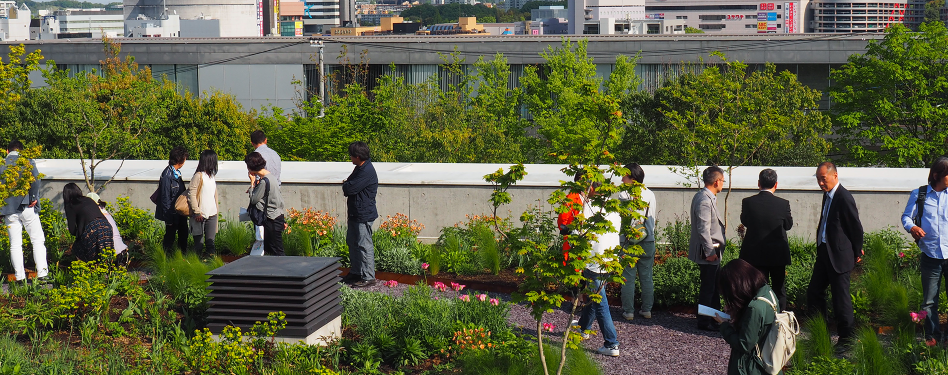
With the global population explosion, the pace and nature of conventional land development practice is negatively impacting the ecological systems that life on Earth depends on.
Solutions to global problems
The good news is that GBCI has assembled knowledge and solutions across hundreds of experts and projects to implement the Sustainable SITES Initiative (SITES) rating system, ensuring ecologically resilient communities are more equipped to withstand and recover from episodic floods, droughts, wildfires and other catastrophic events. SITES brings together solutions to these problems under a shared set of global aspirations to
- Transform the market through design, development and maintenance practices.
- Create regenerative systems and foster resiliency.
- Ensure future resource supply and mitigate climate change.
- Enhance human well-being and strengthen community.
Adaptability to international needs
SITES was developed to be applied worldwide, and our team is happy to work with project teams on a one-on-one basis to adapt any U.S. references, standards and guidelines to localized resources, where applicable.
So, whether your project is located in Bangkok, Brisbane or Bangalore, we’d love to have you participate in SITES, a comprehensive set of guidelines and performance benchmarks that define sustainable sites, measure their performance, and ultimately elevate the value of landscapes.
Here is a list of SITES prerequisites and credits with U.S.-specific references that can be adapted to international projects:
- P1.1: Limit development on farmland
- P1.2: Protect floodplain functions
- P1.3: Conserve aquatic ecosystems
- P1.5: Redevelop graded sites
- P3.1: Manage precipitation on site
- P3.2: Reduce water use for landscape irrigation
- P3.3: Manage precipitation beyond baseline
- C3.4: Reduce outdoor water use
- P4.1: Create and communicate a soil management plan
- P4.2: Control and manage invasive plants
- P4.3: Use appropriate plants
- C5.8: Support transparency and safer chemistry
- C6.8: Reduce light pollution
- P7.2: Control and retain construction pollutants
- C7.7: Protect air quality during construction
- C8.6: Use renewable sources for landscape electricity
Certifying your project under SITES demonstrates your leadership and expertise in landscape design and sustainable development.
Interested in learning more about certifying a SITES project in your country? Check out these four resources to find out how to get started on your sustainable land development project today:
- Download a complimentary copy of the SITES v2 Rating System and Scorecard, available in English, Chinese and Spanish.
- Get your team up to speed on SITES quickly by visiting our free webinars.
- Purchase the SITES v2 Reference Guide for a comprehensive set of resources to help your design team understand and apply the SITES v2 Rating System to your project. This resource includes credit examples, documentation criteria, calculation guidelines, and other materials and tools.
- Visit our SITES project directory to explore SITES projects registered and certified to date and uncover the strategies these SITES landscapes used to achieve SITES certification.
Together, we can create regenerative ecosystems that bring awareness and build connection between people and the natural world, creating more sustainable and resilient places for present and future generations.
Reach out to us, because SITES—like the LEED rating system—was designed to evolve over time with global feedback. Your team’s research and experience will add value and increase global knowledge of site sustainability.
Project teams around the globe are jumping into SITES. Register your project through SITES Online in the early phases of project conception.
Any questions? Please contact us.
